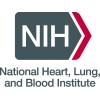
Study of the PAS-Port® Proximal Anastomosis System in Coronary Bypass Surgery
Coronary Artery DiseaseThe study has been designed to comparatively evaluate the safety and effectiveness of the PAS-Port Proximal Anastomosis System and conventional suturing techniques for creation of the connection between graft veins and the aorta in patients undergoing coronary artery bypass graft surgery for treatment of coronary artery disease. Patients in the study will have a coronary angiogram approximately 9 months following surgery to determine the patency of vein grafts created using either the automated PAS-Port or hand sewn methods. Safety will be evaluated by documenting the occurence of adverse clinical events and evealuating possible association with either method.

This Study Uses Ultrasound to Determine Whether Atorvastatin or Pravastatin Effects the Progression...
Coronary ArteriosclerosisThis study was designed to assess the effects on coronary artery plaque using aggressive lipid-lowering therapy versus moderate lipid-lowering therapy. A substudy will examine the effect of these treatments on brachial artery vasoactivity.

Study of the Arachidonate 5-Lipoxygenase Enzyme in Affecting the Risk for Coronary Heart Disease...
Coronary Heart DiseaseThe purpose of this study is to determine whether a particular substance involved in inflammation, called leukotrienes, is involved in causing heart disease to occur or to progress.

A Study to Examine MPI SPECT Imaging With BMS068645 and Adenosine Compared to Coronary Angiography...
Heart DiseaseIschemic Heart DiseaseThe purpose of the study is to determine whether BMS068645 is as effective as Adenosine SPECT at detecting blockages in heart arteries, and to determine if it will have fewer side effects

Radial Artery Versus Saphenous Vein Grafts in Coronary Artery Bypass Surgery
Cardiovascular DiseaseCoronary Artery DiseaseVA patients with coronary artery disease and who have agreed to undergo coronary artery bypass graft surgery would be randomized to receive either radial artery or saphenous vein to the study vessel. The primary outcome variable is graft patency at one year.

Effect of Nitric Oxide Donor on Endothelial Progenitor Cells in Patients With Coronary Artery Disease...
Coronary Artery DiseaseRegular exercise reduces the risk of heart problems, in part because it improves the work of the endothelium (the cells that line blood vessels). Exercise appears to release precursor cells from the bone marrow that will later become endothelial cells. A molecule called nitric oxide (NO) appears to be involved in this release. However, some heart patients do not improve their endothelial function despite regular exercise. The researchers believe that the heart disease in these patients may interfere with the normal relationship between exercise and endothelial function. This study is designed to test whether giving a patient nitroglycerin (which is converted to NO in the bloodstream) will increase the release of endothelial precursor cells from the bone marrow. If the study succeeds, it may lead to improved healing of arteries in heart disease patients. Adults may be eligible for this study if they have coronary artery disease and do not take nitroglycerin or nitroglycerin-like medication on a daily basis. Volunteers will be admitted to the Clinical Center on 2 separate nights at least 1 week apart. On the morning after each admission, volunteers will have blood drawn from an arm vein for laboratory tests, and then walk on a treadmill until fatigue or discomfort prevents further exercise, or until asked to stop. On one of their admissions, volunteers will receive 1 tablet of nitroglycerin under the tongue shortly before the treadmill test. Volunteers will be monitored by EKGs and blood pressure tests during the treadmill tests, and will have more blood drawn at about 15 minutes and 24 hours after each treadmill test. Researchers will examine the levels of endothelial precursor cells and nitric oxide in the blood samples taken before and after exercise.

Co-administration Study in Patients With Elevated Cholesterol and Coronary Heart Disease (0653-802)(COMPLETED)...
HypercholesterolemiaCoronary DiseaseThe purpose of this study is to investigate additional cholesterol lowering effects in patients with coronary heart disease by giving an investigational drug with a patient's current approved cholesterol lowering medication.

MARS - Monitored Atherosclerosis Regression Study
AtherosclerosisCoronary Artery DiseaseThe purpose of this study is to determine whether significant alterations in serum lipoproteins as provided by the drug lovastatin can substantially reduce atherosclerosis progression or even induce regression.

Levosimendan Pretreatment for Weaning Patients From Cardio-Pulmonary Bypass
Coronary Heart DiseaseThe study evaluates the efficacy of intravenous levosimendan treatment started during a coronary artery bypass operation to wean patients from a heart lung machine.

Electromechanical Mapping to Evaluate Heart Muscle
Myocardial IschemiaPatients with narrowed heart arteries who undergo coronary angiography (imaging of the heart's blood vessels) may participate in this "heart mapping" study designed to gain information about the condition of different areas of the heart muscle. In coronary angiography, a thin tube called a catheter is inserted through a small incision in the groin and pushed up to the heart. There, a contrast dye is injected, revealing areas of blockage in the coronary arteries-the vessels that supply blood to the heart muscle. As soon as the angiography is completed, patients in this study will undergo another procedure called "Biosense mapping." For this procedure, a special catheter with a tiny sensor at the tip will be inserted into the sheath that was used for the angiography and advanced to the heart's main pumping chamber-the left ventricle. The sensor detects the pattern of an electromagnetic field generated from a pad under the patient, and an image of the precise location of the catheter in 3-dimensional space can be seen on a computer screen. The catheter is then navigated to various precise locations in the ventricle, producing an electromechanical map that distinguishes scarred muscle tissue from healthy tissue-information that can be important in guiding treatment. When this mapping is completed, the patient will be given a drug called dobutamine to increase the heartbeat, and the mapping will be repeated. The heart may also be mapped while the heart rate is increased with a pacing catheter to simulate exercise. The test will be stopped if adverse side effects develop. Patients in the study will also have magnetic resonance imaging (MRI) and PET (positron emission tomography) scans to get additional information about the heart muscle, such as blood flow and metabolism rate.
